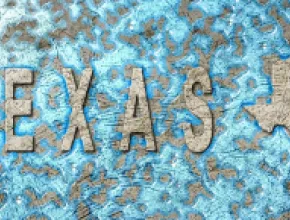Washington, D.C.
The U.S. meetings industry contributes $907 billion to the U.S. economy, generating 6.3 million jobs and providing $64 billion in federal and $46 billion in state and local tax revenue, according to a study released by PricewaterhouseCoopers and an alliance of 14 meetings industry organizations.
Sponsors of the study said that the nearly $1 trillion figure was a conservative estimate because the study was conducted in 2009 during a historic low point in meetings industry revenue.
The Economic Significance of Meetings to the U.S. Economy study, which featured contributions from meetings industry associations such as MPI, PCMA, ASAE, DMAI and the CIC, will serve the purpose of educating legislators, the media and the pubic of the value of meetings, and stemmed from what industry leaders readily acknowledge as a lack of a cohesive message when meetings and events were assailed in wake of the TARP bailout.
“Today is a historic day for our industry,” said Roger Dow, president and CEO of the U.S. Travel Association, a national umbrella organization representing all segments of the U.S. travel and tourism industry. “This is really the first-ever definitive, quantitative, researched-based analysis of the economic significance of face-to-face meetings are to this country.
As we look at a country that is trying to climb out of a recession,” he continued, “[This gives] understanding to the critical role that meetings and events play in supporting jobs and communities across America, and really creating an environment that fosters both innovation and business success, to quantify the economics, the employment and the significance of this industry and use that to really share this story with legislators, regulators, economists and the public.”
Key findings of the study, which Dow said will be updated in coming years, included the following:
- There were 1.8 million corporate and business meetings, trade shows, conventions, congresses, incentive events and other meetings that took place in the U.S. during the study, which was conducted in 2009.
- These meetings directly generated $263 billion in spending, created 1.7 million jobs and contributed $106 to the gross domestic product.
- The total output of the meetings industry was measured at $907 billion and contributed 6.3 million jobs.
- 205 million attendees participated in the nation’s conventions, conferences, congresses, trade shows and exhibitions, incentive events and corporate/business meetings.
- Corporate/business meetings accounted for 1.3 million of the meetings.
- 85 percent of the meetings were conducted at venues with lodging, and generated 250 million room nights/overnight stays.
The breakdown of the $263 billion in direct spending is as follows:
- $151 billion was meeting planning and production related.
- $113 billion was travel and tourism related, which represents 16 percent of the $708 billion travel and tourism sector in the U.S.
Panelists emphasized that the study was conducted to counter the negative perception issues that have roiled the meetings industry in the wake of the TARP bailout and resulting “AIG Effect.”
“I think the primary goal was first and foremost, after a time where our industry was significantly misunderstood and vilified to a certain extent, we needed to all have common data to demonstrate the contribution that this industry makes to jobs—and we’re seeing now that for every meeting we have three jobs—the economic impact, and also about taxes,” said Bruce MacMillan, president and CEO of MPI. “If meetings and events are eliminated from a community, it impacts the local taxes, the state and the federal taxes, and at this time every tax dollar counts.
“Now we have that benchmark data,” he continued. “We can demonstrate once and for all the significant economic impact that this makes on the economy. Now we’re all starting on the same page, and we can tell our story in Washington and in small communities across the country.”
MacMillan’s assessment was echoed by other industry leaders.
“This data did not exist prior to now,” said Deborah Sexton, president and CEO of PCMA. “We had anecdotal data [from individual associations]. We now have a united research project that speaks to the industry and not to the individual associations.
“This industry has to be understood,” Sexton continued. “We can’t find ourselves in the same situation we found ourselves two years ago where no one understood the value of what this industry brings to cities, to states, to the country, to the world, for that matter. I don’t think it’s over just because the research is done. Now is just the beginning.”
The impact of the meetings industry on the economy is massive. According to the study, the U.S. meetings industry contributes more to the economy than the auto industry ($78 billion) and the information and data processing industry ($76 billion). It fell short of the impact of the healthcare industry, however, which is approximately $1 trillion.
Phase two of the project will be to quantify the information to government officials on the federal, state and local levels.
“On March 15 and 16 when we have our legislative action summit, we will be providing our attendees as they go up for their [Capitol] Hill appointments with some of this information to explain to explain to the legislators that they meet with the value of the meetings industry and how important it is to their district,” said Joseph A. McInerney, president and CEO of the American Hotel & Lodging Association.






